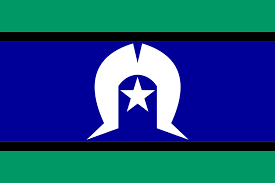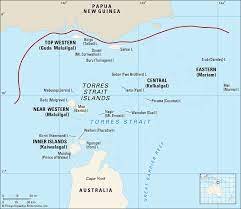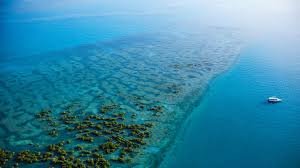Introduction
Welcome aboard as we embark on a thrilling journey through Torres Strait on a yacht delivery. In this blog post, we will explore the fascinating aspects of sailing in this unique region, including the weather conditions, tides, shipping, currents, and navigation of the channel.
Weather Conditions
When sailing through Torres Strait, it is crucial to be aware of the weather patterns to ensure a safe and enjoyable journey.

The region experiences a tropical climate, characterised by two distinct seasons: the wet season (November to April) and the dry season (May to October).
During the wet season, sailors can expect occasional heavy rainfall and thunderstorms, which may impact visibility and sea conditions. It is essential to monitor weather forecasts and plan accordingly to avoid unfavourable conditions. On the other hand, the dry season offers more stable weather, with calm seas and pleasant temperatures.
Tides and Currents
Torres Strait is known for its strong tides and currents, making it crucial for sailors to have a good understanding of tidal movements. The tides in the strait can reach up to six meters, creating powerful currents that can significantly affect navigation.
It is essential to consult tide tables and plan your journey accordingly, taking advantage of favourable tides to ensure a smooth passage. Additionally, be prepared to encounter eddies and whirlpools caused by the intricate network of reefs and islands in the area.
Shipping in Torres Strait
As you sail through Torres Strait, you will encounter various types of shipping vessels, including cargo ships, fishing boats, and ferries. It is crucial to be vigilant and maintain a safe distance from these larger vessels, as they have limited manoeuvrability and may follow established shipping lanes.
Keep a close eye on the AIS (Automatic Identification System) to track the movements of other vessels and ensure you are aware of any potential collision risks. Remember, safety should always be the top priority when sharing the waters with commercial ships.
Navigation of the Channel
Navigating through Torres Strait requires careful attention to the channel’s intricate network of reefs and islands. The area is known for its challenging navigation, and it is highly recommended to have an experienced delivery skipper familiar with the region.
Electronic navigation tools, such as GPS and electronic charts, are indispensable for safely navigating the channel. However, it is essential to cross-reference electronic charts with paper charts and navigational aids to ensure accuracy.
Furthermore, maintaining a lookout for navigational markers, buoys, and beacons is crucial for safe passage. These aids provide valuable information to guide you through the channel and avoid potential hazards.
Conclusion
Sailing through Torres Strait on a yacht delivery is an exhilarating experience, but it requires careful planning and navigation. By understanding the weather conditions, tides, shipping, currents, and navigation of the channel, you can ensure a safe and successful journey.
Remember to always prioritise safety, stay informed about the weather, respect the tides and currents, and maintain a cautious distance from larger vessels. With the right preparation and knowledge, sailing through Torres Strait will undoubtedly be a memorable adventure.
Whether you’re a seasoned sailor or embarking on your first voyage, entrusting your vessel to experts is crucial, especially when navigating the dynamic waters of the Torres Strait. With Yacht Delivery Solutions, you gain more than just experienced skippers; you gain:
- Unmatched familiarity: Years of successful deliveries traversing the Torres Strait in both directions, ensuring meticulous planning and seamless passage.
- Expertise you can trust: Over 150,000 nautical miles and 20 years of experience sailing vessels of all sizes and types.
Don’t settle for just any delivery service. Partner with Yacht Delivery Solutions for a safe, efficient, and worry-free journey across the Torres Strait.
Contact us today for a free consultation and experience the difference that expertise makes.





Leave a reply